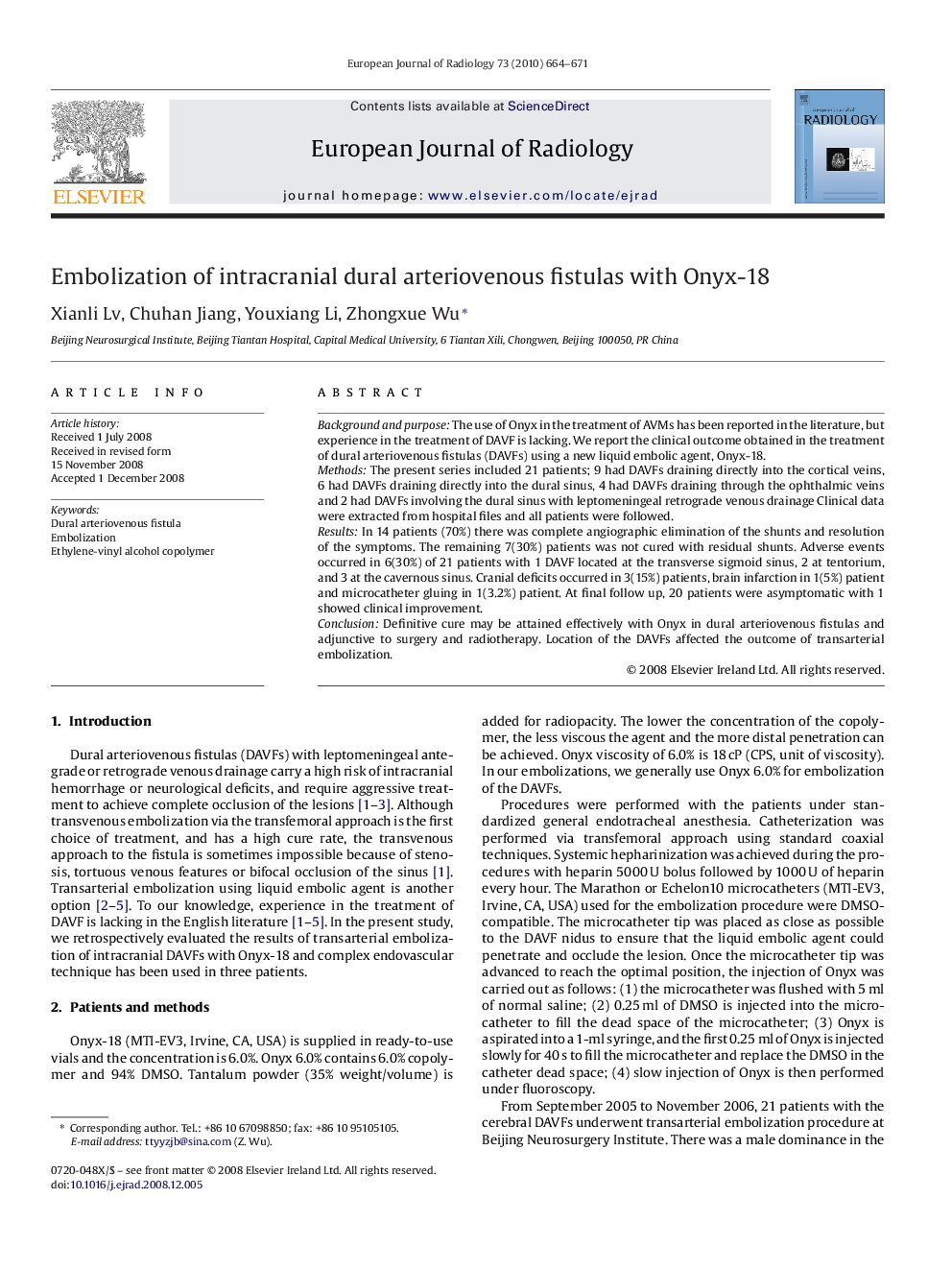| Article ID | Journal | Published Year | Pages | File Type |
|---|---|---|---|---|
| 4226869 | European Journal of Radiology | 2010 | 8 Pages |
Background and purposeThe use of Onyx in the treatment of AVMs has been reported in the literature, but experience in the treatment of DAVF is lacking. We report the clinical outcome obtained in the treatment of dural arteriovenous fistulas (DAVFs) using a new liquid embolic agent, Onyx-18.MethodsThe present series included 21 patients; 9 had DAVFs draining directly into the cortical veins, 6 had DAVFs draining directly into the dural sinus, 4 had DAVFs draining through the ophthalmic veins and 2 had DAVFs involving the dural sinus with leptomeningeal retrograde venous drainage Clinical data were extracted from hospital files and all patients were followed.ResultsIn 14 patients (70%) there was complete angiographic elimination of the shunts and resolution of the symptoms. The remaining 7(30%) patients was not cured with residual shunts. Adverse events occurred in 6(30%) of 21 patients with 1 DAVF located at the transverse sigmoid sinus, 2 at tentorium, and 3 at the cavernous sinus. Cranial deficits occurred in 3(15%) patients, brain infarction in 1(5%) patient and microcatheter gluing in 1(3.2%) patient. At final follow up, 20 patients were asymptomatic with 1 showed clinical improvement.ConclusionDefinitive cure may be attained effectively with Onyx in dural arteriovenous fistulas and adjunctive to surgery and radiotherapy. Location of the DAVFs affected the outcome of transarterial embolization.
